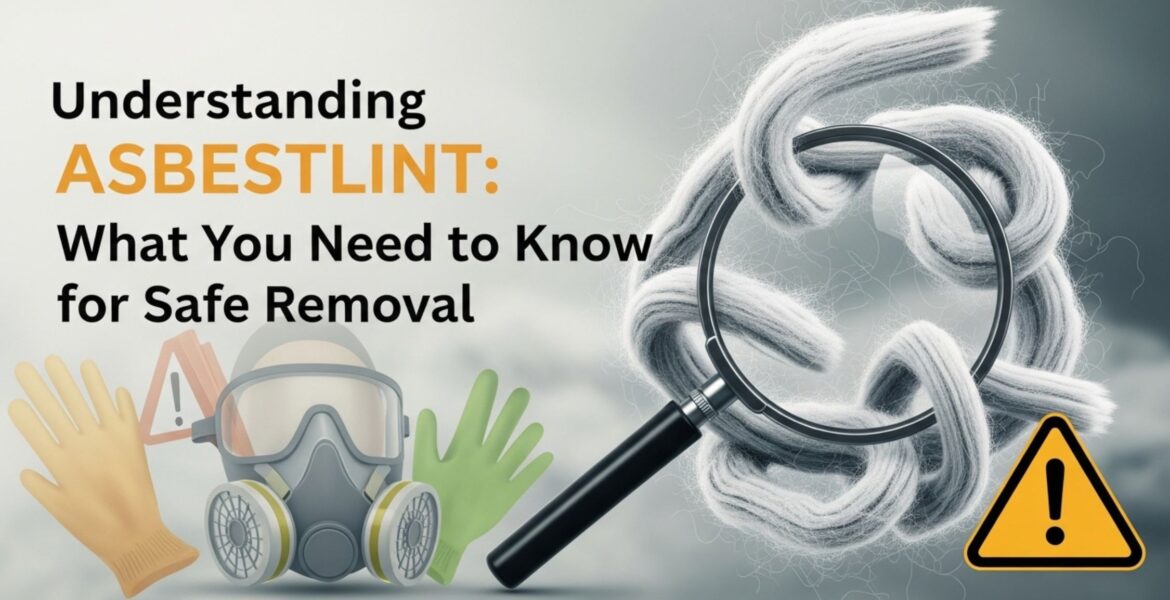Understanding asbestlint: What You Need to Know for Safe Removal

Asbestos. Just the mention of this word can send shivers down your spine. Known for its once-celebrated insulating properties, asbestos has become a notorious material linked to severe health risks. As more homeowners and workers encounter asbestlint, understanding what it is and how to deal with it safely becomes crucial. Whether you’re renovating an old home or simply curious about the dangers lurking in outdated building materials, this guide will provide you with essential knowledge on safe asbestos removal practices. Let’s dive into the world of asbestlint and uncover everything you need to know for a safe environment.
What is Asbestos?
Asbestos is a naturally occurring mineral composed of thin, fibrous crystals. These fibers are incredibly durable and resistant to heat, making asbestos an attractive choice for various industrial applications.
Historically, it was used in construction materials like insulation, roofing shingles, and floor tiles. Its fire-resistant properties made it popular for protecting structures from high temperatures.
However, despite its beneficial qualities, asbestos poses significant health risks. When disturbed or damaged, the fibers can become airborne and be inhaled into the lungs. This can lead to serious respiratory diseases over time.
Regulations have since been implemented to limit its use due to these health hazards. Awareness of asbestlint has grown significantly as more people seek safe solutions during renovations or repairs involving older buildings.
The Dangers of Asbestos Exposure
Asbestos exposure poses significant health risks that can manifest years after initial contact. When disturbed, asbestos fibers become airborne and are easily inhaled or ingested.
These tiny particles can lead to severe respiratory issues. Conditions such as asbestosis, lung cancer, and mesothelioma are directly linked to asbestos exposure. The danger lies in the fact that symptoms often take decades to appear.
Even minimal exposure carries risks. Many people unknowingly come into contact with asbestos during home renovations or when handling old materials containing it.
The insidious nature of these diseases makes awareness crucial. Knowing where asbestos might be present is vital for anyone involved in construction or renovation activities. Taking precautions can save lives and prevent devastating health consequences down the line.
The Importance of Proper Removal
Proper removal of asbestlint is crucial for ensuring safety in any environment. Asbestos fibers can become airborne during the removal process, posing severe health risks to anyone nearby.
When not handled correctly, these microscopic particles can linger long after the job is done. This makes it vital to follow strict protocols and guidelines established by health authorities.
A thorough assessment before beginning work allows for a more calculated approach. Identifying all locations where asbestlint exists minimizes potential exposure risks.
Using appropriate personal protective equipment (PPE) during removal tasks further safeguards workers and residents alike.
Without proper techniques, even minor disturbances can lead to significant contamination issues down the line. Therefore, prioritizing correct methods cannot be overstated; it’s essential for both immediate and long-term well-being.
DIY vs Professional Removal: Pros and Cons
DIY asbestos removal can seem appealing due to cost savings. Many homeowners feel empowered by taking on a project themselves, believing they can handle the task with proper research.
However, this approach carries significant risks. Asbestos fibers are hazardous when disturbed and require specialized equipment and protective gear. Without adequate training, individuals may expose themselves or their families to dangerous particles.
On the other hand, hiring professionals ensures safety and compliance with regulations. Certified companies have experience in handling asbestlint safely and efficiently. They follow strict protocols for containment and disposal, minimizing health risks.
The downside? Professional services often come at a higher price point. Homeowners must weigh these costs against the potential dangers of DIY attempts. It’s crucial to consider personal expertise versus professional capabilities when making your decision about asbestos removal.
Finding a Certified Asbestos Removal Company
When it comes to asbestlint, choosing the right removal company is crucial. Start by looking for certifications and licenses specific to asbestos handling. These credentials ensure that the team is trained in safe practices.
Check online reviews and ask for recommendations from neighbors or friends who have had similar work done. Personal experiences can provide valuable insights into a company’s reliability.
Don’t forget to request quotes from multiple companies. This helps you gauge not just pricing but also professionalism in their approach.
Ask about their safety protocols during removal. A reputable company will prioritize your health and well-being, outlining clear steps they take to minimize risk.
Ensure they offer post-removal inspections. This step confirms that all traces of asbestlint are eliminated safely, providing peace of mind for you and your family.
Tips for Safe Asbestos Handling and Disposal
When dealing with asbestlint, safety should always come first. Start by wearing protective gear. This includes a high-quality respirator, gloves, and disposable coveralls to minimize exposure.
Before beginning any work, ensure that the area is well-ventilated. Open windows and use fans to help circulate air without spreading fibers further.
Never attempt to break or damage materials containing asbestos. Instead, keep them intact whenever possible to reduce the risk of releasing harmful particles into the air.
Use specialized tools designed for handling asbestlint safely. Regular home improvement tools can inadvertently create dust or debris that may be hazardous.
When disposing of asbestos waste, follow local regulations rigorously. Seal all materials in airtight bags and label them clearly before transporting them to an approved disposal site designated for hazardous materials.
Conclusion:
Asbestos poses significant health risks, and understanding its dangers is crucial for every homeowner or worker. Awareness of asbestlint and its implications can lead to safer environments. If you suspect the presence of asbestos in your space, take it seriously. While DIY methods may seem tempting due to cost savings, the stakes are too high.
Opting for a certified professional ensures that you meet safety standards and regulations while minimizing risk. Proper handling and disposal practices cannot be overstated either; they protect not only your health but also that of those around you.
You may also like


Exploring kibard: A Deep Dive into Its Features and Benefits

Leave a Reply